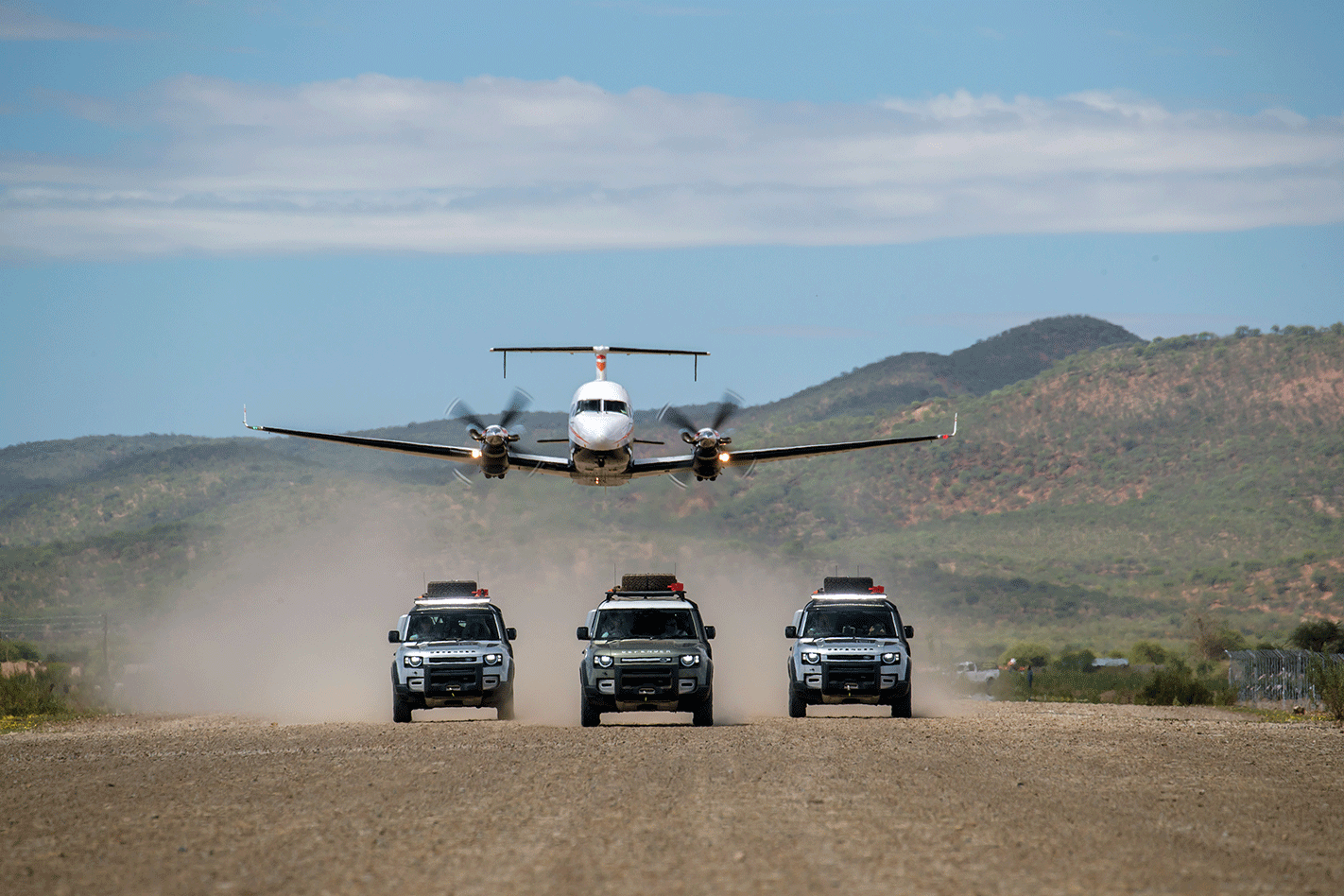If vehicular travel on the African continent conjures up images of an open-top or boxy white Land Rover bumping along muddy tracks then you might be left wondering where the British marque’s new Defender fits into the scheme of things. The Defender nameplate is, after all, the successor to the Series Land Rovers that were instrumental in exploring Africa and used by institutions such as the Red Cross, UN and other NGOs to transport their personnel through the untamed terrain of the Dark Continent.
Ever since Land Rover stopped making the old utilitarian Defender in 2016, people have wondered what a new Defender could be in an era where the brand’s products have moved noticeably upmarket. Can a new luxury Land Rover live up to the Defender name and the 70 years of heritage behind it?
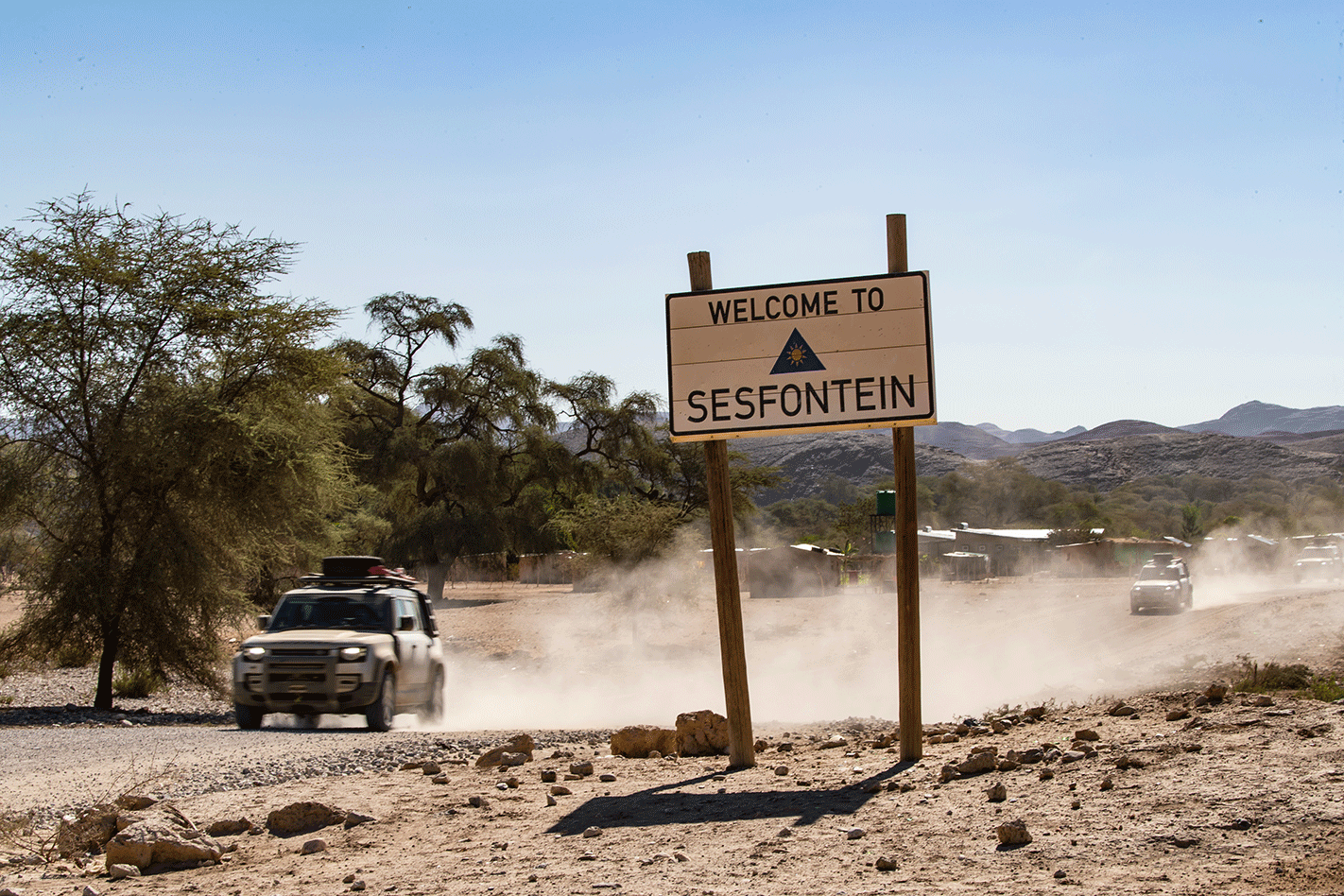
The 680-kilometre route takes us down the treacherous Van Zyl’s Pass and along the Skeleton Coast on the South Atlantic seaboard in a part of the country known as Kaokoland. It’s an area that is largely unpopulated due to its harsh environment, with only small villages of the Himba and Herero people scattered around the desert scrub.
The vehicles on this trip are long-wheelbase five-door Defender 110 wagons with either D240 four-cylinder diesel or P400 in-line six-cylinder petrol powerplants. The Defender will also be available in short-wheelbase three-door 90 variants from later this year.
With the 2020 Defender just months from our shores, it’s no coincidence that Land Rover has brought us to Africa for our first drive of the all-new vehicle. This is not a traditional model launch drive but a true expedition over rugged terrain in the far north of Namibia.
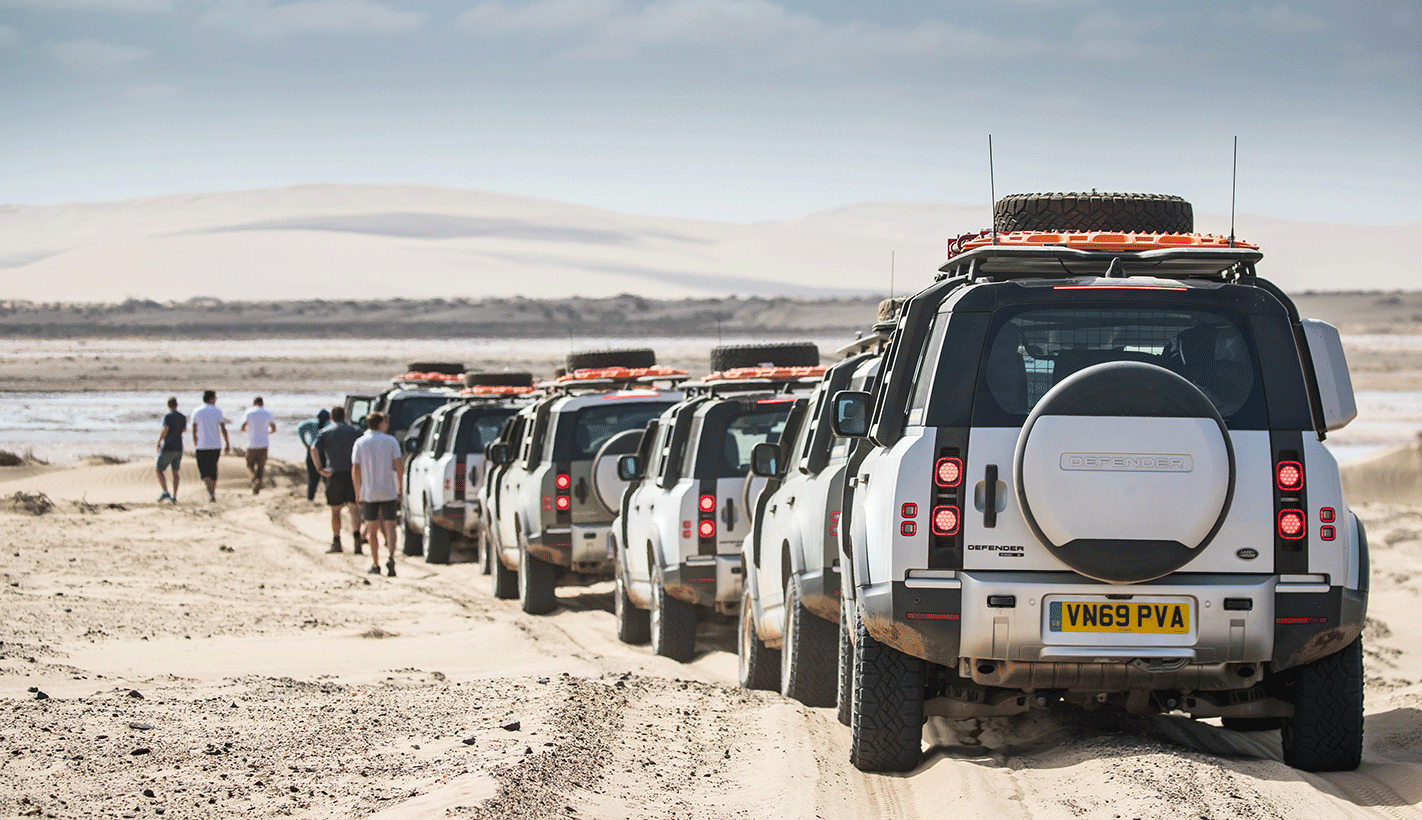
Our first taste of the new Defender is in a D240 looking very traditional in its Pangaea Green paint with white roof and white steel wheels. The overall look of the new vehicle takes no prisoners, with a design that is modern while incorporating hues of the classic Land Rovers of the past.
The sawn-off rear of the vehicle carries a spare wheel on its door and the roof features ‘alpine light’ windows at each side that allow light into the cabin. There’s a distinct shoulder along the hipline of the vehicle where the sheetmetal meets the extensive glasshouse, while the front end has a unique and modern appearance.
All the Defenders on this trip are fitted with the Expedition package, which includes a raised air intake snorkel, expedition roof rack, a ladder to access the roof on the passenger’s side and a storage box on the driver’s side. They are also fitted with Goodyear Duratrac all-terrain tyres to conquer the sharp, rocky tracks with confidence. The silver P400s have 19-inch alloy wheels and the green D240s are on 18-inch painted steel rims.
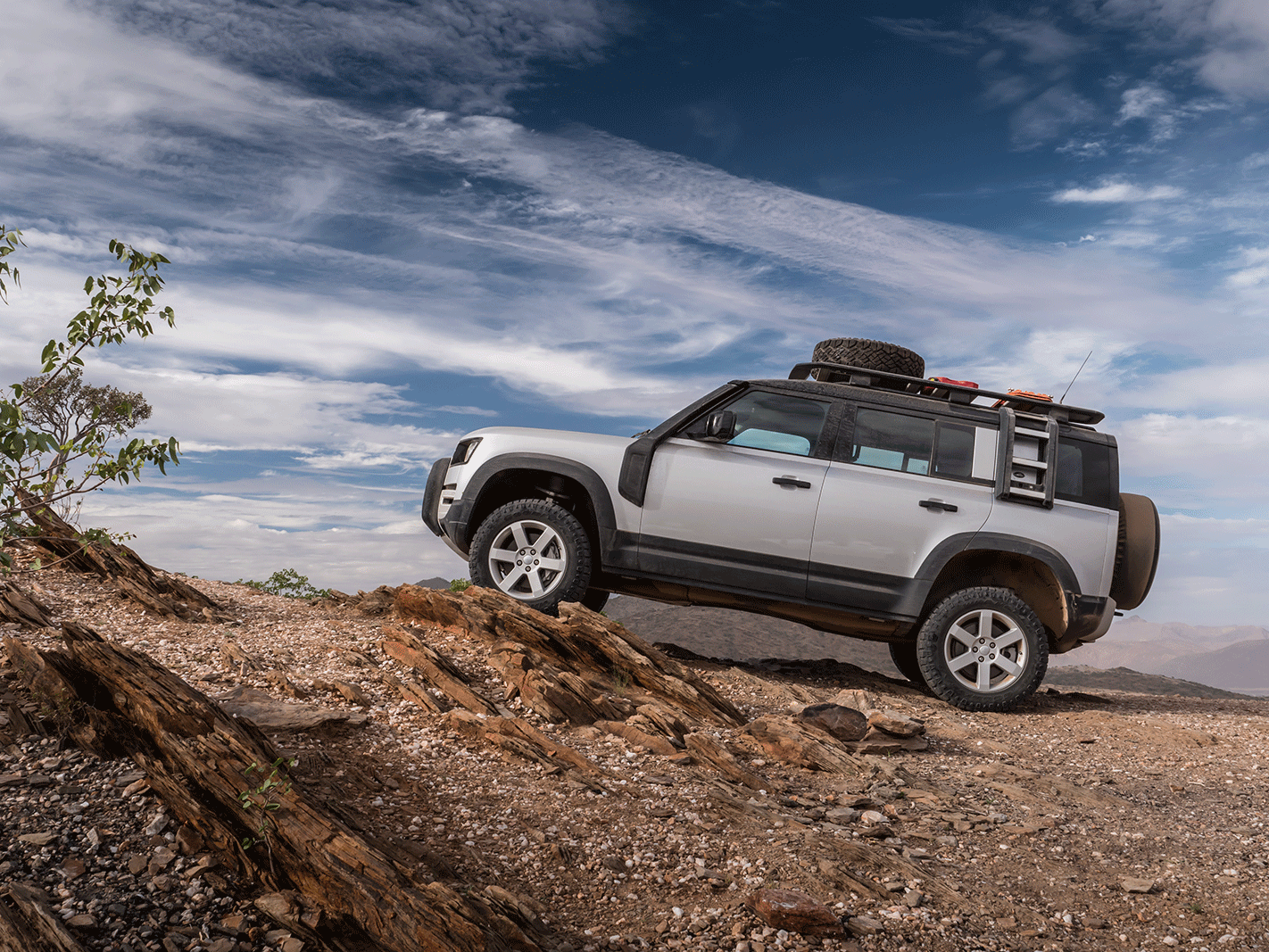
Our D240’s 2.0-litre Ingenium diesel produces a sprightly 177kW and 430Nm to make light work of the steep terrain and sandy tracks. Eight-speed automatic is the only choice offered – in contrast to the old manual-only Defender – but it is perfectly matched to the modern powerplant.
The 110 Defender is large at 5018mm long and 2105mm wide (with mirrors) on a 3022mm wheelbase (up 233, 113 and 228mm on the 2016 Defender), but at 1967mm high is 214mm lower than its predecessor. It proves surprisingly agile as we snake along the tracks and through bushes that scrape down the vehicle’s sides. The road surface changes between loose sand and shaley rocks, but the constant four-wheel-drive system and Terrain Response 2 management system ensure surefooted progress.
The coolest homage to the old Defender comes once you get inside the new model and see the dash. Land Rover has reconfigured the handy dashboard shelf and grab handle and integrated it in the all-new cabin. The Defender doesn’t have the multiple massive touchscreens of other new Land Rovers, just a relatively small one on that dash shelf that shows the sat-nav, audio and Terrain Response settings.
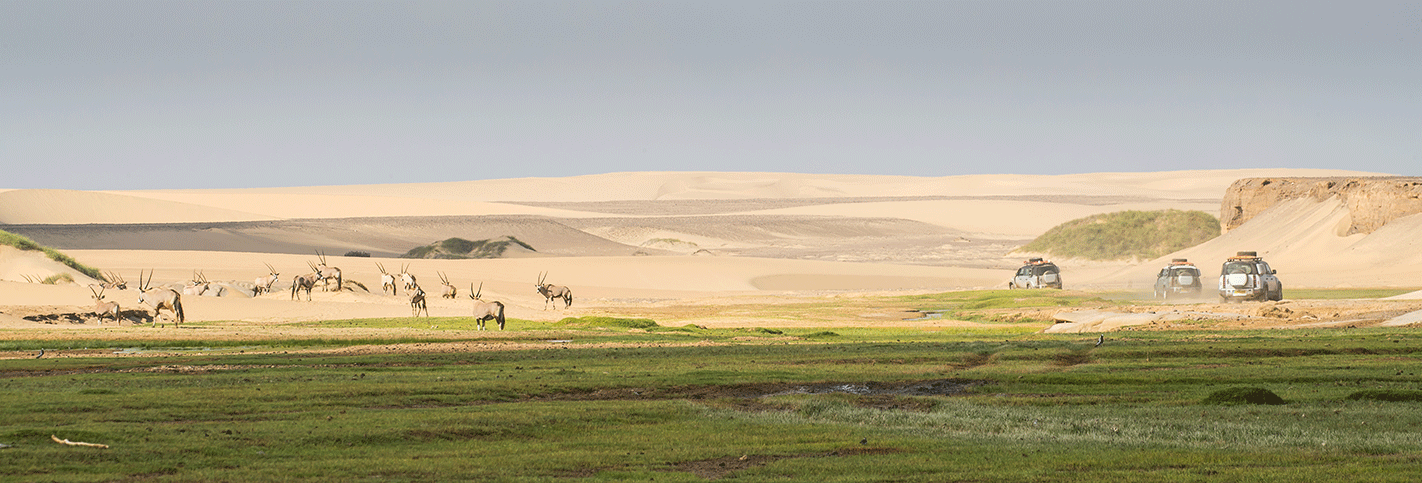
The cabin is much wider than the old model, so the driver’s shoulder doesn’t hang out in the wind anymore, and it is much more comfortable both in the front and back seats. The 110 has a third-row seat, but we didn’t get to sample it. The front-row seat can be confined with a centre pew for three-up touring. It folds down to became an armrest with cupholders when not being used as a seat.
Day one takes us north-west from the Kaokoland capital Opuwo to a bush camp in a dry river bed. The region has been in drought for six years, ensuring most creeks and rivers are dry, but as we leave the capital, dark storm clouds brew and we skirt the worst of the rain that falls behind us.
With us in camp tonight is John Kasaone, executive director of Integrated Rural Development and Nature Conservation (IRDNC). John is a native Himba and he tells us of IRDNC’s work to halt poaching and the killing of wildlife, and to protect the environment in Kaokoland, aided by Land Rover’s support of the IRDNC and the tusk conservation program. Land Rover recognises its strong association with Africa and continues to support these organisations to protect the fauna.
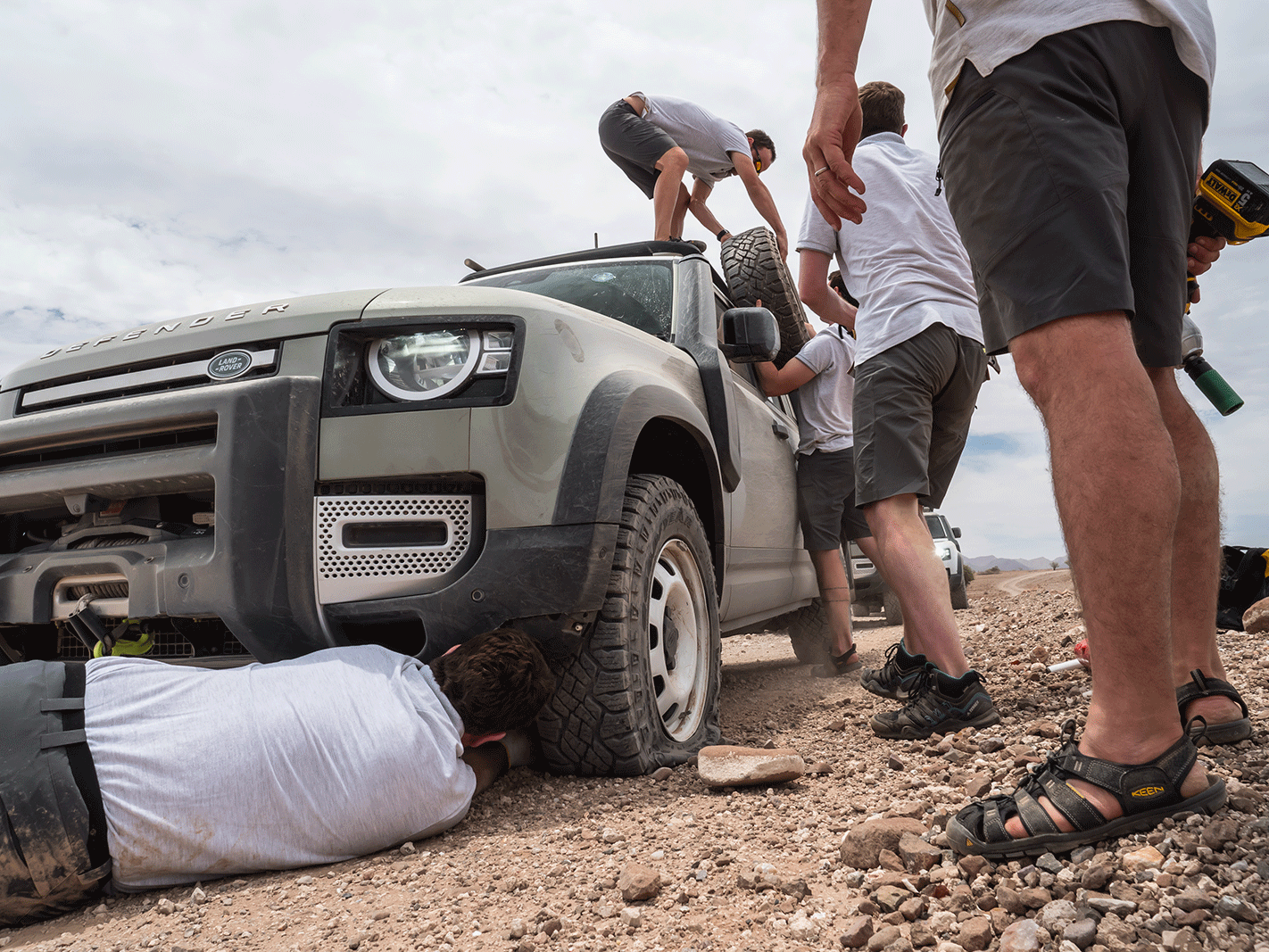
Day two begins with the challenging Van Zyl’s Pass, a steep and rocky descent from atop the escarpment, down towards the west coast. Even though we’ve been on gravel roads since the start, this is the first real off-road obstacle. With the Defender’s four-wheel-drive system locked in low range and Terrain Response 2 set in Rock Crawl mode, the vehicles edge their way down the tricky slope. The 360-degree cameras afford the driver a view in front of the vehicle and to the sides of the front wheels – helpful in terrain where a sharp rock can easily slice the sidewall of a tyre.
The 600-metre descent to the valley is daunting and there is much high-fiving when we reach the bottom, but our feat is put into perspective when you consider that the track was originally cut in the 1960s by Dutch explorer Ben Van Zyl using local labour and a Ford Model T. Today, negotiating the pass is a badge of honour for modern explorers.
The pass opens out onto the wide expanse of the Marienfluss and its multicoloured sands, providing us with our first chance to open up the Defender’s performance. Again the diesel engine and eight-speed transmission provide the power to shoot the wagon across the sand, but most revealing are the stability and dynamics of these high-riding vehicles.
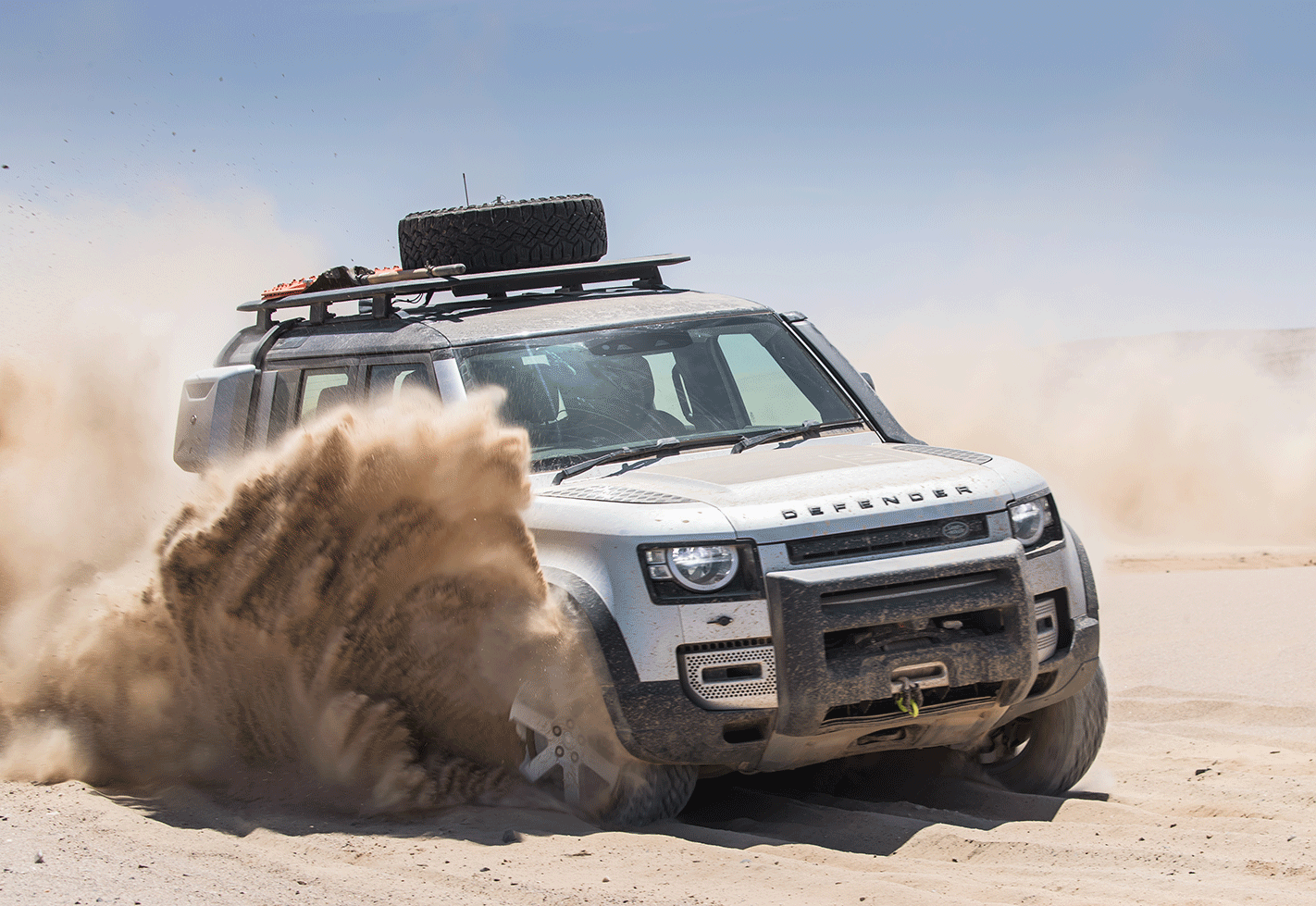
Land Rover put a lot of effort into making new Defender as impressive on-road at speed as it is off-road – unlike the old Defender, which excelled off-road but left a lot to be desired on tarmac. Much of this work was around the stiffness of the aluminium monocoque chassis, which the company claims is the stiffest platform it has ever made.
The D7X platform is derived from the D7U chassis that underpins the Range Rover, Range Rover Sport and Discovery models but has been significantly strengthened with steel subframes in lieu of aluminium on the other SUVs. On these are mounted the suspension components, using larger mounting points, bushes and knuckle joints.
“Making Defender not just good over off-road disciplines, but not numbed down on road as well, that was the biggest challenge,” says chief engineer Steven Frick. “A lot of it comes from the stiffness of the body and suspension being a known (from D7U), and that allows us to tune it for all conditions. It should be a pleasure to drive over everything.”
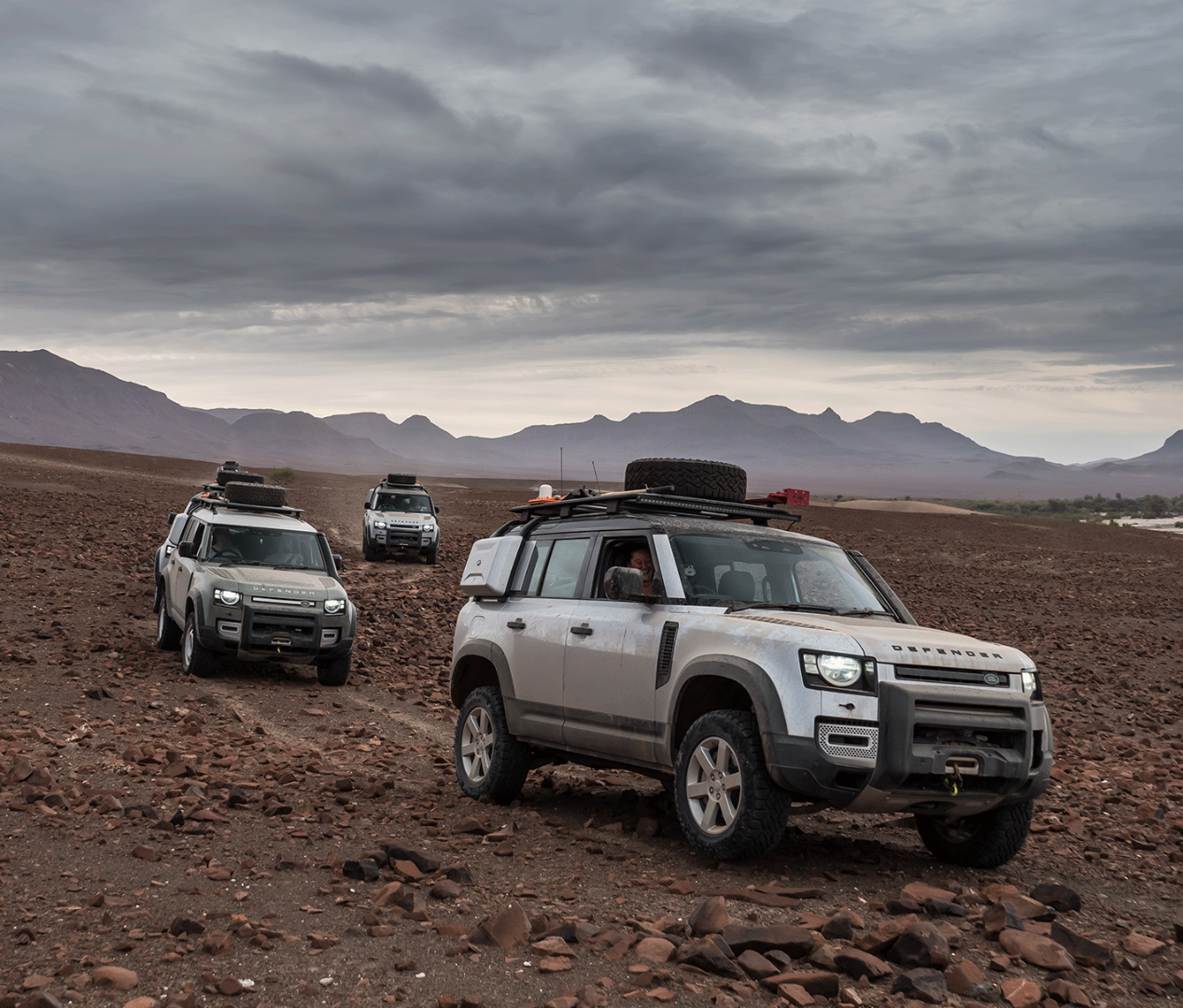
New Defender inspires confidence in the driver on- and off-road, whether rock crawling or blasting through the desert. Its forgiving platform is rewarding to drive in all conditions like nothing that has worn the Defender nameplate before.
Travelling north until the mountains of Angola are within view, we swing southwards across more open country towards our overnight stop near a traditional Himba village, Purros.
The road includes a crossing of the Hoarusib River, which is usually dry. It was dry when another group of Defenders crossed it that morning, but remember those storms of 36 hours ago? Those waters have moved down from the highlands over a fall of 900 metres and the river now flows fast enough to have the Land Rover Experience team questioning if we can cross it. The new Defender has a class-leading wading depth of 900mm, even without the raised air intake fitted to these cars. The river’s not that deep but is dangerously rapid.
Our team leader, Dougie Dale, wades across on foot with a rope fastened to him and can barely keep his footing. He determines that we should be able to cross in the Defenders and he leads the way in his vehicle with the raging torrent licking over the bonnet. However, a satellite radio call from the team already in Purros tells us the river there, just 20 kilometres downstream, is flooded beyond crossing and we won’t be able to make it.
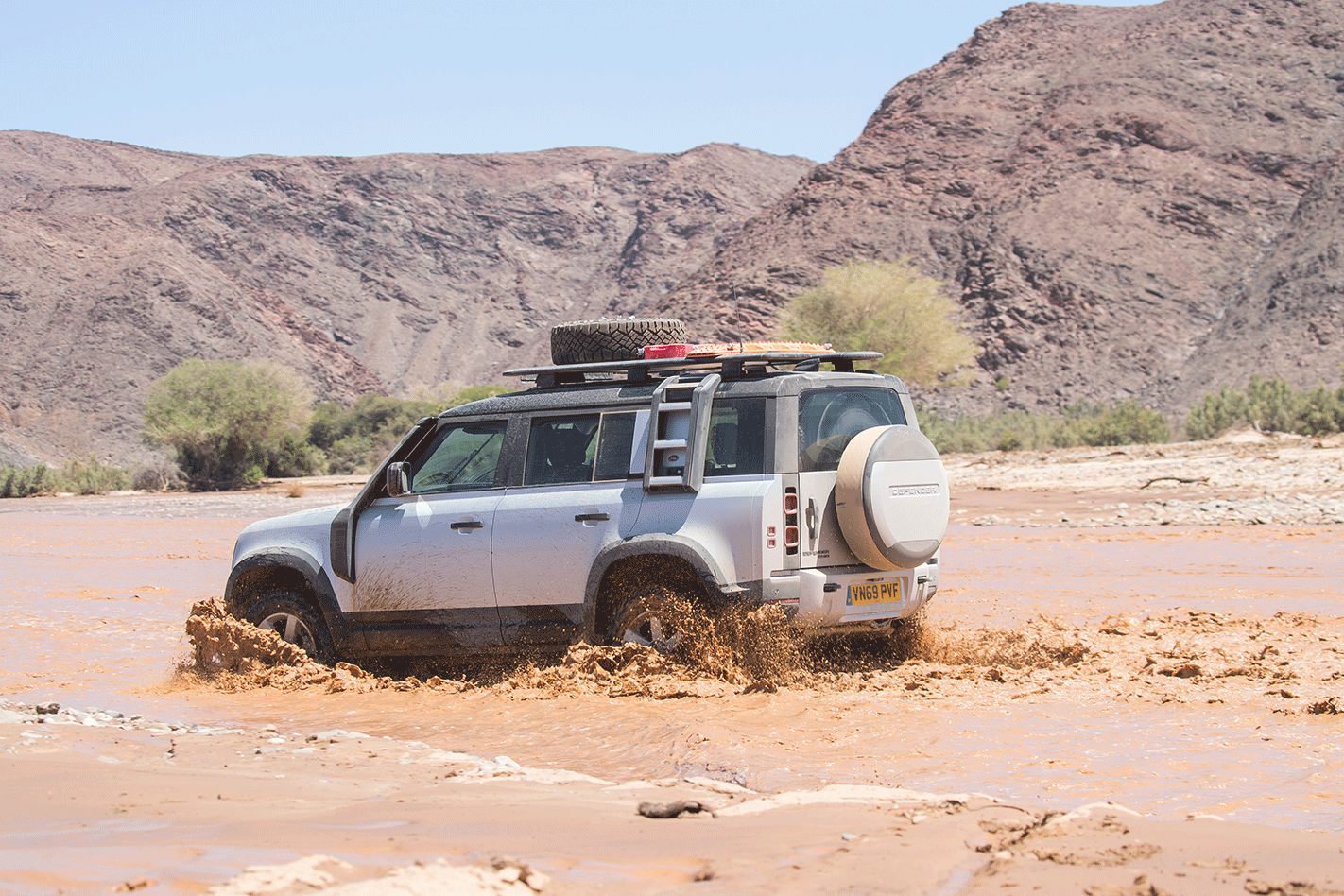
This means a cross-country detour along the western bank of the river over undulating terrain that is rocky on top but quickly breaks through to soft sand if you spin the wheels, providing a true test of the Defender’s off-road systems. With spotters running ahead of the convoy to find a path where there are no roads or tracks, we make slow progress, and it isn’t until well after dark that we make our accommodation.
As quickly as the river had risen, it falls, allowing us to cross next morning, but it has prevented us taking the planned route further up the riverbed, back to our start point at Opuwo. We’re back on gravel roads that wind through mountain ranges, sometimes opening up to cross sandy stretches.
Today we’re in the 3.0-litre petrol-engined P400 Defender. With 294kW and 550Nm on tap, this is the true performance model of the Defender range and it makes the most of the new model’s dynamic chassis and inspiring handling. The turbocharged in-line six benefits from a 48-volt electric supercharger; this provides extra grunt at low engine speeds, replicating the torque of a diesel down low while retaining the turbocharged surge of power in the top end.
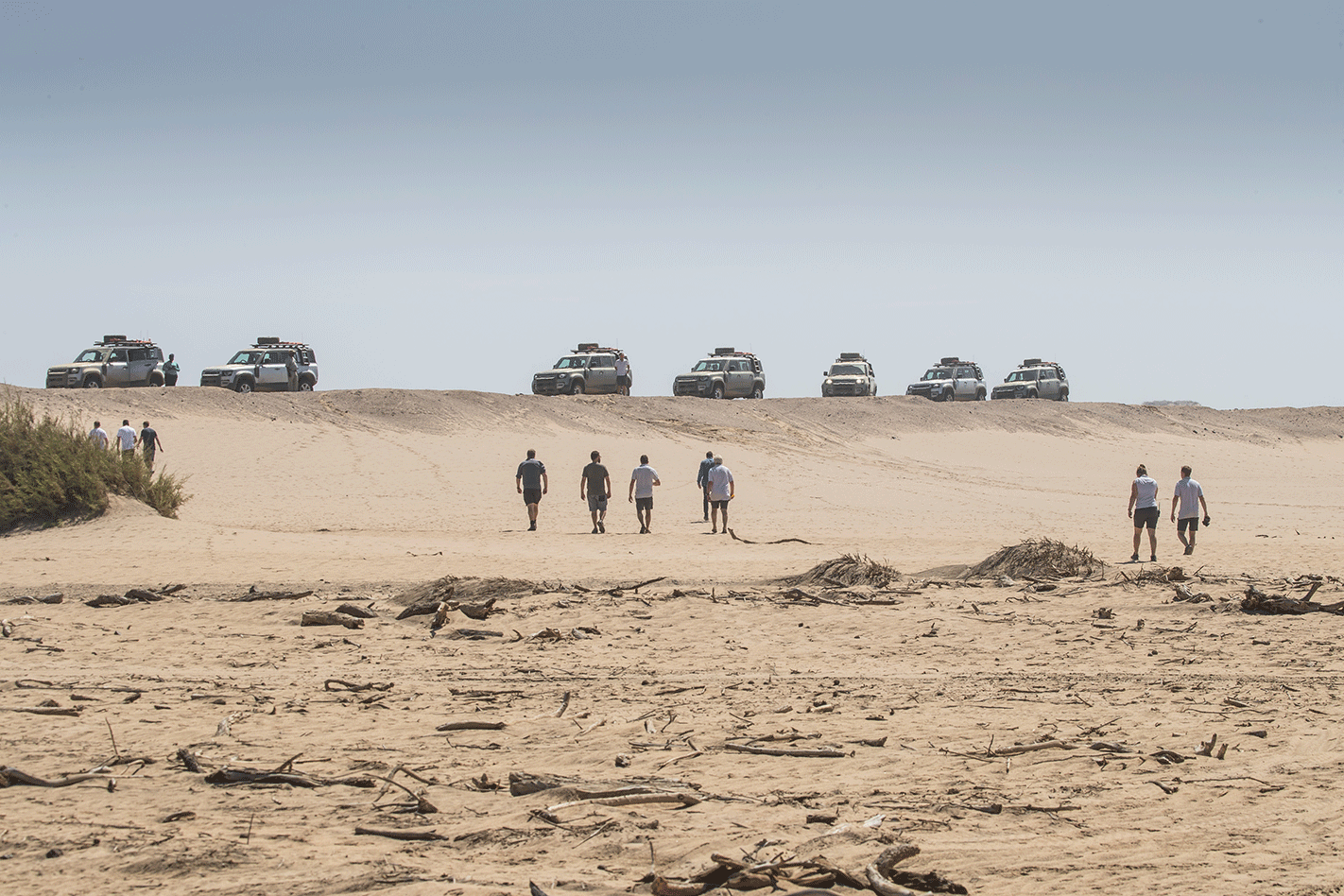
Only four of our 680 kilometres were on sealed road, making this a true test of the new Defender’s ability off-road and on gravel. It’s a far more user-friendly proposition than before, which is sure to boost its popularity around the globe.
Choose your weapon: It’s a spec and trim fest
The Defender 110 is due in Australia in August, followed by the Defender 90 First Edition in October and the rest of the range by year’s end. At the time of writing, launch dates were subject to change due to the coronavirus.
So far only prices for the 110 range have been released, but we expect the 90 to come in around $4-5K less than the five-door wagon. Interestingly, the price range almost doubles across the line-up.
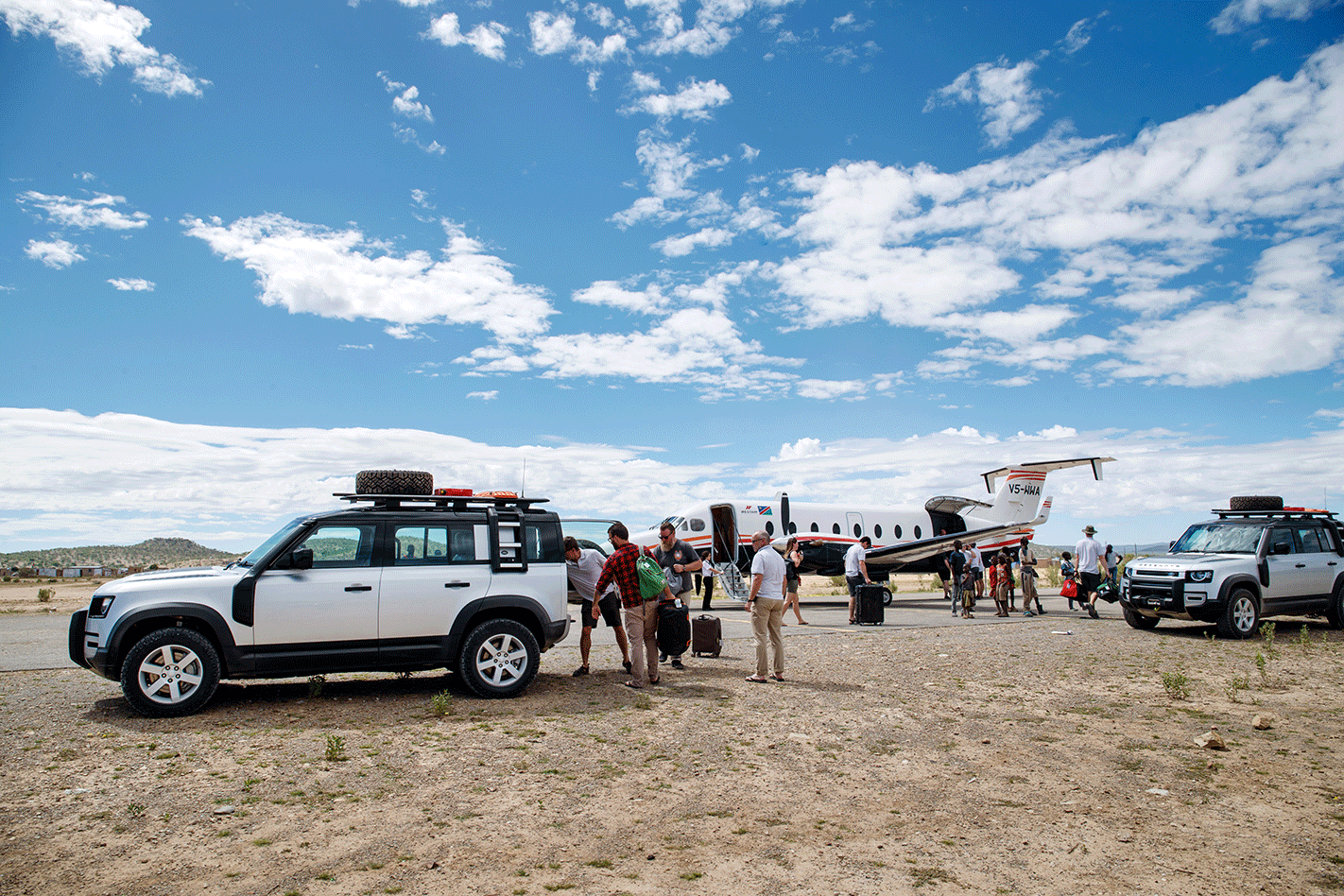
The new Defender range is extensive for such a niche vehicle, available in three engine specs and six trim levels, if you include the First Edition variant. And that’s just for the 110!
D200 – $69,990 D240 – $75,900 S D240 – $83,800 S P400 – $95,700 SE D240 – $91,300 SE P400 – $103,100 HSE P400 – $112,900 First Edition D240 – $102,500 X P400 – $137,100
Land Rover Defender 110 D240 specs Engine: 1999cc 4cyl, dohc, 16v, turbo-diesel Max Power: 177kW @ 4000rpm Max Torque: 430Nm @ 1400rpm Transmission: 8-speed automatic Weight: 2323kg 0-100km/h: 9.1sec (claimed) Economy: TBC Price: $79,000 On sale: August 2020


